

 Wine descriptions…
Wine descriptions…
How should a wine writer describe a wine so that everyone understands what he/she means? “Excellent” is of course a good word in this context which cannot easily be misunderstood. Possibly it is a bit short although sometimes it can actually be enough.
Some writers choose to write entire novels about each wine and cite characteristics, flavours and aromas endlessly. But too much does not help either.
You need to find the core of the wine. How to best describe the experience. For drinking a wine is all about an experience, a personal experience that you are going to pass on to others. Will the reader better understand a poetic description of the wine than a dry and factual? Can you describe a crispy dry champagne as “the feeling when wading in a mountain stream” and believe that people understand what you mean? Perhaps that is easier to understand than words like minerality, structure and soft tannins?
I remember when we made a visit to Angelo Gaja in Barbaresco a few years ago. He told us that when he is in the United States he often have to “explain” his wines. Americans are accustomed to heavy, powerful wines. They don’t always understand the more complex and elegant charm of a Barbaresco. “I thought long about how to explain the difference between elegant wines and heavy, powerful wines” said Angelo. “I started doing comparisons with actors. The American wines, I said, are like John Wayne, friendly and accessible as an open book. Our wines on the other hand are like Marcello Mastroianni standing in a corner, looking a little grumpy. You have to have the desire to discover them, they require some effort…
What works for you? What kind of wine descriptions give you the best information? Let us know!
Wine trends…
This is the time of the year when many wine oracles have pronounced predictions on what will happen in 2016. Sometimes pointless truism, sometimes very thoughtful. We have this year refrained from predicting anything for 2016.
Instead we as you, dear reader, what do YOU think will be the trends in wine in 2016?
Send us a mail with your views and we will publish the thoughts in a future Brief!
PS: Don’t forget to take a look at this year’s wine tours!
Britt & Per
PS: Recommend to your friends to read the Brief!
– – – – –
What’s on at BKWine Tours
- Chile and Argentina in South America, February 6-21, 2016
- South Africa, February 26 – March 7, 2016
- Bordeaux, April 20-24, 2016
- Champagne, September 14-18
- Bordeaux, September 28 – October 2
- Douro Valley, October 12-16
For more information please contact us on email or on phone (we’re on French time), or go to our wine travel site on www.bkwinetours.com!
We also make custom designed wine tours – on-demand tours for you and a group of friends, for your company (maybe to scout new winegrowers?), for a special event… We can combine winery visits and wine touring with other activities: gastronomic workshops, visit to an oyster farm, truffles hunting, cheese making, and more. More info on the custom designed and bespoke BKWine wine tours and travel here!
Wine tours in Finnish: We also do wine tours in Finnish. And in German, Norwegian, Spanish… Do you want the latest news and updates on our wine travel activity? Subscribe here! (Second alternative BKWineTours.com)
Do you want the latest news and updates on our wine travel activity? Subscribe here! (Second alternative BKWineTours.com)
From the World of Wine
Cultured yeast from Danish Chr. Hansen
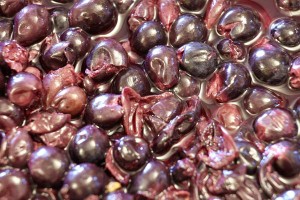 Danish company Chr. Hansen, with headquarters on the outskirts of Copenhagen, is one of the major suppliers to the wine industry. The vast majority of wines ferment with cultured yeast and often this yeast comes from Chr. Hansen. The company continually experiments to offer different types of yeast to wine producers. 2009 it launched Prelude, the first cultivated yeast without Saccharomyces. Prelude contains 100% Torulaspora delbruecki, a wild yeast that is naturally present in the must.
Danish company Chr. Hansen, with headquarters on the outskirts of Copenhagen, is one of the major suppliers to the wine industry. The vast majority of wines ferment with cultured yeast and often this yeast comes from Chr. Hansen. The company continually experiments to offer different types of yeast to wine producers. 2009 it launched Prelude, the first cultivated yeast without Saccharomyces. Prelude contains 100% Torulaspora delbruecki, a wild yeast that is naturally present in the must.
Chr. Hansen also offer yeasts that produce lower alcohol, lactic bacteria to quickly get the malolactic fermentation started and much more to facilitate a winemakers life. Read more about Chr. Hansen interesting research on Meininger.de.
Vegetarian food and natural wine at Restaurant Folk in Gothenburg
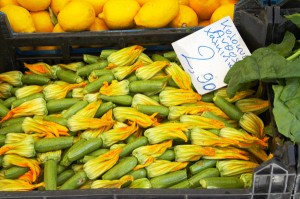 Folk is a vegetarian restaurant in Gothenburg situated inside the theatre with the same name at Olof Palme Square. The wine list is full of interesting natural wines. Not a bad combination, vegetarian food and natural wine. But you have to be a little adventurous. Some of the wines are different and it is important to have an open mind.
Folk is a vegetarian restaurant in Gothenburg situated inside the theatre with the same name at Olof Palme Square. The wine list is full of interesting natural wines. Not a bad combination, vegetarian food and natural wine. But you have to be a little adventurous. Some of the wines are different and it is important to have an open mind.
Start with their natural bubbles. It is like nothing you have drunk so far. It is a Chenin Blanc from Touraine called Pet’Nat meaning petillant naturel, that is naturally sparkling. The wine is bottled before fermentation is completed and so continues to ferment in the bottle with no added sugar or yeast. There is a fresh acidity and taste of citrus and apples. Reminds me a bit of apple cider actually (500 SEK a bottle). With the food, we had a Beaujolais called En Rémont from a small producer called Julie Balagny (760 SEK). Fruity and quite elegant, an easy to drink wine with the hint of volatile acidity that I often find in natural wines which is refreshing and nice as long as it doesn’t dominate the wine, which it doesn’t here.
The food is served in relatively large tapas portions. You can order several and share. I recommend the fried cauliflower with chervil mayonnaise (70 SEK), wax beans with goat cheese cream, mint and fried rye bread (115 SEK) and apples in buttery caramel sauce with whipped crème fraiche and almond cakes (85 SEK). The only thing I have to complain about is that the restaurant is a bit too dark. They possibly want to be environmentally friendly but maybe they don’t have to cut down on the electricity quite so much. More: folkgbg.se
Top ten wine travel destinations
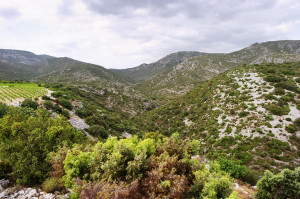 What is your best wine tour destination? If I ask 10 people that question I would probably get ten different answers. What is “best” depends on what you want so in essence a list of “the ten best wine travel destinations” is not a very meaningful exercise. A bit like “the world’s top ten wines”. There’s no such thing, it’s an absurd statement. But it is still fun and interesting, and it can give you some inspiration for where to go and what to explore. Each year the America magazine The Wine Enthusiast publishes a list of their Top Wine Travel Destinations.
What is your best wine tour destination? If I ask 10 people that question I would probably get ten different answers. What is “best” depends on what you want so in essence a list of “the ten best wine travel destinations” is not a very meaningful exercise. A bit like “the world’s top ten wines”. There’s no such thing, it’s an absurd statement. But it is still fun and interesting, and it can give you some inspiration for where to go and what to explore. Each year the America magazine The Wine Enthusiast publishes a list of their Top Wine Travel Destinations.
Read more on “the world’s best wine tour destinations in the article on BKWine’s Travel Blog: The Best Wine Travel Destinations?
And some more detailed information, including what not to miss, on some of the destinations on the list:
- Bordeaux
- Alto Adige, with Veneto
- Basque Country, with Rioja
- Franschhoek in South Africa
- Alentejo in Portugal
- Burgenland in Austria
No more Mumm Champagne at Formula 1
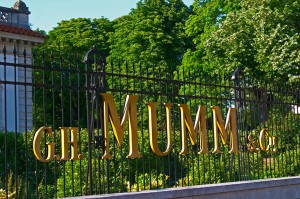 There is much you can do with a bottle of champagne if you don’t want to drink it. You can baptise a ship, you can pour it down the sink (apparently a habit of young Swedes but we don’t know if it is actually true) or you can spray it on whoever happens to be near you if you are the lucky winner of a Formula 1 race. Champagne Mumm, owned by Pernod Ricard, has for 15 years been the sponsor of the Formula 1 races, but now the contract has been terminated by the Formula 1 management. The new sponsor will be Moët & Chandon.
There is much you can do with a bottle of champagne if you don’t want to drink it. You can baptise a ship, you can pour it down the sink (apparently a habit of young Swedes but we don’t know if it is actually true) or you can spray it on whoever happens to be near you if you are the lucky winner of a Formula 1 race. Champagne Mumm, owned by Pernod Ricard, has for 15 years been the sponsor of the Formula 1 races, but now the contract has been terminated by the Formula 1 management. The new sponsor will be Moët & Chandon.
The tradition of spraying bubbles wildly supposedly date from 1966 when Jo Siffert won the Le Mans 24 Hour race and got a sun-warmed bottle to open. The rest you can guess. Read more thedrinksbusiness.com
If you would rather drink some excellent champagne than spray it on the audience, then you can come on a wine tour to Champagne with BKWine the coming autumn.
A smart way to transport wine when travelling: Lazenne Wine Check
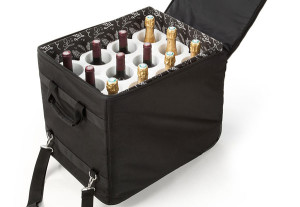 If you fly to the wine regions it can be difficult to bring bottles back home. That is perhaps not the most important thing when wine touring, the greatest part of it is the experience, the meetings with the winemakers, the landscape the wine and food etc. But if you do want to bring bottles back with you there are different solutions: bubble wrap, Styrofoam and others. An elegant solution that allows you to transport 12 bottles as checked baggage is Lazenne’s “Wine Check”. It is a lightweight roller bag with an insert that can take up to 12 bottles. I have not tried it myself but it seems functional and smarter that other solutions built on “traditional” suitcases. They also sell other wine travel accessories, such as bottle pouches. Read more: lazenne.com.
If you fly to the wine regions it can be difficult to bring bottles back home. That is perhaps not the most important thing when wine touring, the greatest part of it is the experience, the meetings with the winemakers, the landscape the wine and food etc. But if you do want to bring bottles back with you there are different solutions: bubble wrap, Styrofoam and others. An elegant solution that allows you to transport 12 bottles as checked baggage is Lazenne’s “Wine Check”. It is a lightweight roller bag with an insert that can take up to 12 bottles. I have not tried it myself but it seems functional and smarter that other solutions built on “traditional” suitcases. They also sell other wine travel accessories, such as bottle pouches. Read more: lazenne.com.
Fewer regions in France
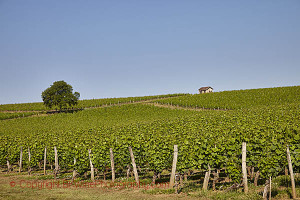 France makes serious (?) attempts to cut down its large state and municipal administration. One step has been to merge a number of regions. This merger took effect on January 1st, 2016. France had previously 22 regions. These have now, after many heated discussions, merged into 13. And now the merged regions are supposed to have new names. I bet there will be more heated discussions. For the wine regions, this means for example that the Champagne-Ardenne, Lorraine and Alsace are now one administrative region, having previously been three. Aquitaine (with Bordeaux) and Poitou-Charente (with Cognac) has become one gigantic region as has Midi-Pyrénées (wines of the South-West) and Languedoc-Roussillon. The 13 new regions are
France makes serious (?) attempts to cut down its large state and municipal administration. One step has been to merge a number of regions. This merger took effect on January 1st, 2016. France had previously 22 regions. These have now, after many heated discussions, merged into 13. And now the merged regions are supposed to have new names. I bet there will be more heated discussions. For the wine regions, this means for example that the Champagne-Ardenne, Lorraine and Alsace are now one administrative region, having previously been three. Aquitaine (with Bordeaux) and Poitou-Charente (with Cognac) has become one gigantic region as has Midi-Pyrénées (wines of the South-West) and Languedoc-Roussillon. The 13 new regions are
- Alsace Champagne-Ardenne Lorraine
- Aquitaine Limousin Poitou-Charentes
- Auvergne Rhône-Alpes
- Bretagne
- Bourgogne Franche-Comté
- Centre Val de Loire
- Corsica
- Languedoc-Roussillon Midi-Pyrénées
- Normandie
- Nord-Pas-de-Calais Picardie
- Ile-de-France (Paris)
- Pays de la Loire
- Provence-Alpes-Côte d’Azur
For a map of the new regions, click here gouvernement.fr
Food is important for travellers
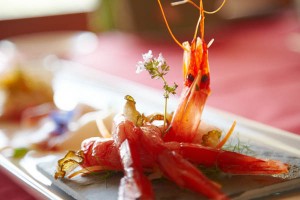 According to the UN agency UNWTO 88% of all travellers consider that the gastronomy plays a major role on the trip. It comes as no surprise. We know that many participants on our wine tours are as interested in the local gastronomy as they are in wine. More and more people are looking for unique and special dining experiences during their travels. Food festivals around the world are becoming more and more popular. People go on holiday with the main purpose to eat the local food, drink the local drinks.
According to the UN agency UNWTO 88% of all travellers consider that the gastronomy plays a major role on the trip. It comes as no surprise. We know that many participants on our wine tours are as interested in the local gastronomy as they are in wine. More and more people are looking for unique and special dining experiences during their travels. Food festivals around the world are becoming more and more popular. People go on holiday with the main purpose to eat the local food, drink the local drinks.
Instead of planning visits to monuments and museums they pre-booked table at famous restaurants, and do research on which food markets to visit. Souvenirs bought home are often something edible. Read about food’s new importance here venngage.com. There are some amazing pictures as well. Thanks worldfoodtravel.org, who told us about this interesting article.
Clotilde Davenne Brut Extra Crémant de Bourgogne | Birgitta’s Wine of the Month
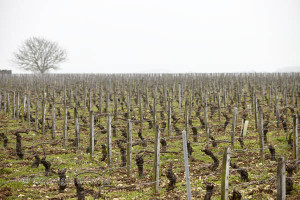 A glass of sparkling wine is perfect when you want to celebrate or just as a nice start of dinner. Clotilde Davenne’s Crémant de Bourgogne Brut is bone-dry and certainly makes you salivate with its high acidity. But it also has so much fruit that it has an excellent balance.
A glass of sparkling wine is perfect when you want to celebrate or just as a nice start of dinner. Clotilde Davenne’s Crémant de Bourgogne Brut is bone-dry and certainly makes you salivate with its high acidity. But it also has so much fruit that it has an excellent balance.
The blend of Pinot Noir and Chardonnay gives a nose of red berries, orange-flower, citrus, minerality and some toastiness. A very fresh palate is filled with green apples, orange-flavoured chocolate, and minerals. Approx. 14 euro.
Autumn wine tours with BKWine, 2016
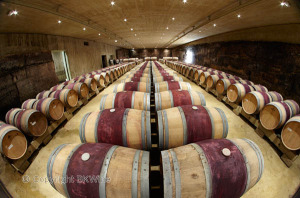 All details have now been finalised for the autumn wine tours, although they have not yet been officially launched. All dates and all the programs are ready. This is how the autumn wine tour program looks:
All details have now been finalised for the autumn wine tours, although they have not yet been officially launched. All dates and all the programs are ready. This is how the autumn wine tour program looks:
- Champagne, September 14-18
- Bordeaux, September 28 – October 2
- Douro Valley, October 12-16
Three exciting tours to classic wine regions. You will taste some of the best wines and meet many talented winemakers.
Book your tour now! You can find full information on BKWineTours.com.
More expensive to produce organic wines?
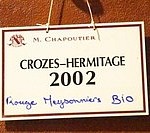 Do organic wines cost more than conventionally produced wines? This has never been an easy question to answer because it is difficult to compare the prices of wines. It is easier with tomatoes and eggs. If you look at production costs however, it turns out that it is more expensive to produce an organic wine. Above all, this is due to the fact that organic growers have lower yields. This is the conclusion of a study made by the Chamber of Agriculture of Bordeaux.
Do organic wines cost more than conventionally produced wines? This has never been an easy question to answer because it is difficult to compare the prices of wines. It is easier with tomatoes and eggs. If you look at production costs however, it turns out that it is more expensive to produce an organic wine. Above all, this is due to the fact that organic growers have lower yields. This is the conclusion of a study made by the Chamber of Agriculture of Bordeaux.
The organic wine grower saves money by not buying synthetic pesticides but he must instead pay more manpower for manual labour and ploughing. So that comes out even. His losses are made on the yield. Instead of the permitted 50 hectolitres per hectare, the organic grower only gets 40-45 hectolitres per hectare. If he can charge his customers a higher price is another story. Read more: vitisphere.com
Travelling in Catalonia, a video
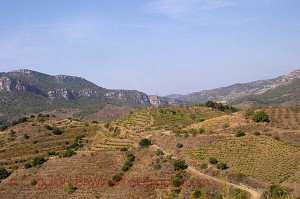 Catalonia in north-east Spain produces some wonderful wine and is home to a fantastic gastronomy. On the wine side it is of course also famous for the cava, Spain’s sparkling wine. Catalonia also makes some delicious red and white wines in the Penedes region. Almost as well-known as Penedes are the wines from Priorat. They used to be almost extinct until they were revived a few decades ago by a handful of wine pioneers who saw great potential in this mountainous region.
Catalonia in north-east Spain produces some wonderful wine and is home to a fantastic gastronomy. On the wine side it is of course also famous for the cava, Spain’s sparkling wine. Catalonia also makes some delicious red and white wines in the Penedes region. Almost as well-known as Penedes are the wines from Priorat. They used to be almost extinct until they were revived a few decades ago by a handful of wine pioneers who saw great potential in this mountainous region.
We have made a short video that shows you some glimpses of the landscape, the wine, the food. Watch it on BKWine’s Travel Blog: Travelling in the Catalonia wine districts.
What people say about our book on organic wines
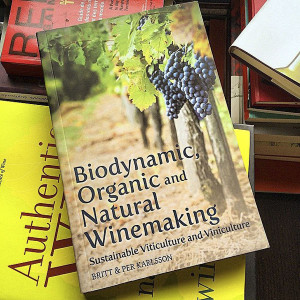 We have been pleased to see a few reviews recently of the English language edition of our book on organic wines: Organic, Biodynamic, and Natural Winemaking. Here’s what they say:
We have been pleased to see a few reviews recently of the English language edition of our book on organic wines: Organic, Biodynamic, and Natural Winemaking. Here’s what they say:
- ”A very interesting book. It discusses and describes organic, biodynamic, and natural wine making, and viticulture in terms that anyone, not just a wine producer can understand” says MyWinePal.
- “The clear and systematic overview makes it possible for both the wine enthusiast and the professional reader to use the book as a reference work for everything that has to do with environmentally friendly methods in the vineyards and in the cellar!, by Jochen Erler, written in German, in the Austrian magazine Weinbau.
A Spanish signature dish: how to make a paella
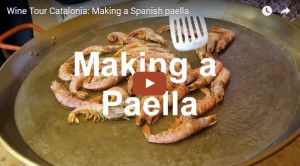 Paella is a very Spanish dish. Usually one thinks of Paella Valenciana (from Valencia) when talking about it. But it is made in many different places in Spain. Want to discover some genuine paella?
Paella is a very Spanish dish. Usually one thinks of Paella Valenciana (from Valencia) when talking about it. But it is made in many different places in Spain. Want to discover some genuine paella?
Here you can see how a real paella catalana is done. You start with frying some shrimps, add garlic, onion, la melsa de la sepia (you’ll see what it is on the video) and some other things. Watch the video on BKWine’s Travel Blog: How to make a real paella.
Receiving “The Nobel Prize of Wine Literature”
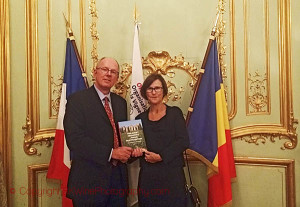 A few months ago we were at the OIV ceremony for their annual book awards. To pick up our prize. OIV is short for International Organisation of Vine and Wine, a sort of “United Nations of wine”. Each year they have a book competition where they give awards to the most deserving books in the area of wine literature. Given what the organisation is, you can imagine that it is a prestigious award. The Director General of the OIV, Jean-Marie Aurand, called it “The Nobel Prize of Wine Literature”. Yes, he did say it somewhat jokingly in his presentation, but in the wine world it is perhaps not far from the truth.
A few months ago we were at the OIV ceremony for their annual book awards. To pick up our prize. OIV is short for International Organisation of Vine and Wine, a sort of “United Nations of wine”. Each year they have a book competition where they give awards to the most deserving books in the area of wine literature. Given what the organisation is, you can imagine that it is a prestigious award. The Director General of the OIV, Jean-Marie Aurand, called it “The Nobel Prize of Wine Literature”. Yes, he did say it somewhat jokingly in his presentation, but in the wine world it is perhaps not far from the truth.
Our latest book was one of the winners! “France, The Country of Wine” won the OIV Award in the category “Wine and Territories”.
Read more on this, see some pictures from the ceremony, and our thank-you speech on BKWine Magazine: Receiving “The Nobel Prize of Wine Literature”.
This is how you disgorge a sparkling wine
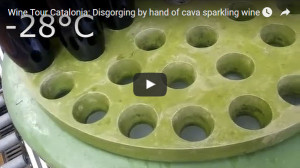 What? Disgorge? Simple. You put the bottle upside down in freezer liquid, you take of the temporary cork, you fill it up with a little bit of extra wine (if needed), bang in a new cork, put on the wire cage (don’t want any unintended popping do we?). And you have your finished bottle. To make it a little bit more elegant you can put a label and some other fancy cosmetics on it.
What? Disgorge? Simple. You put the bottle upside down in freezer liquid, you take of the temporary cork, you fill it up with a little bit of extra wine (if needed), bang in a new cork, put on the wire cage (don’t want any unintended popping do we?). And you have your finished bottle. To make it a little bit more elegant you can put a label and some other fancy cosmetics on it.
The only thing that remains is to drink it!
Watch our video that shows how it is done on BKWine’s Travel Blog: One important step in making cava: disgorging.
The business of Bordeaux and China, a book review | Per on Forbes
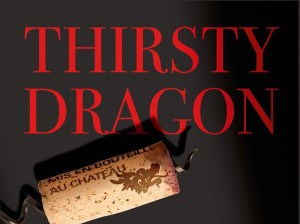 A few years back China became Bordeaux’s biggest export market. Over a few years the Chinese market grew from almost nothing to become the market that Bordeaux could not live without. How this happened is the subject of a new book, Thirsty Dragon, China’s Lust for Bordeaux and the Threat to the World’s Best Wines, by Suzanne Mustacich.
A few years back China became Bordeaux’s biggest export market. Over a few years the Chinese market grew from almost nothing to become the market that Bordeaux could not live without. How this happened is the subject of a new book, Thirsty Dragon, China’s Lust for Bordeaux and the Threat to the World’s Best Wines, by Suzanne Mustacich.
Per does an in-depth review in his latest article on Forbes.com. Read more here on BKWine Magazine: A Love-Hate Story of Bordeaux and China, Book Review of Thirsty Dragon.
To get an even better understanding of Bordeaux, and to taste many excellent wines, you can join us at BKWine on a wine tour to Bordeaux in the autumn.
The most popular sparkling wines and champagnes
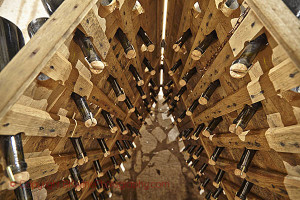 What did you drink on New Year’s Eve. If you are like most people chances are that it was not a champagne. Looking at the statistics of the top-ten sparkling wines in Sweden, none is champagne. Most likely the same goes for most other countries too. Italy has five wines in the top ten though. But if you did drink champagne, what was it? Most likely it was not one of the big and famous brands, judging from the same statistics.
What did you drink on New Year’s Eve. If you are like most people chances are that it was not a champagne. Looking at the statistics of the top-ten sparkling wines in Sweden, none is champagne. Most likely the same goes for most other countries too. Italy has five wines in the top ten though. But if you did drink champagne, what was it? Most likely it was not one of the big and famous brands, judging from the same statistics.
Read more on the most popular bubbly in Per’s article on BKWine Magazine: The most popular sparkling wines and champagne (in Sweden and France).
Come and discover more exciting sparkling wines on a wine tour with BKWine. For example, a wine tour to Champagne with BKWine.
A non-approved way to reduce poisons in the vineyard
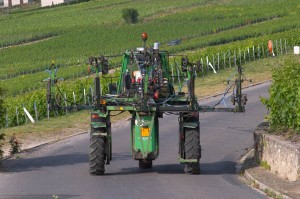 If you are a winemaker, be it “conventional” or organic, you have to spray the vineyards with treatments against diseases. You don’t really have much of a choice. The vines would barely survive and certainly not bear much useful fruit in most wine regions without spraying. Spraying is always, by definition, done with some kind of noxious substance to kill the diseases; sulphur, copper, or other chemicals. Less spraying means less poison distributed so if there were a way to reduce, or even avoid spraying it would be good for the environment, good for the winemakers, and good for the consumers. So is there a way to reduce or eliminate treatments? Yes, there is, but not yet very accepted, nor popular. Here’s one.
If you are a winemaker, be it “conventional” or organic, you have to spray the vineyards with treatments against diseases. You don’t really have much of a choice. The vines would barely survive and certainly not bear much useful fruit in most wine regions without spraying. Spraying is always, by definition, done with some kind of noxious substance to kill the diseases; sulphur, copper, or other chemicals. Less spraying means less poison distributed so if there were a way to reduce, or even avoid spraying it would be good for the environment, good for the winemakers, and good for the consumers. So is there a way to reduce or eliminate treatments? Yes, there is, but not yet very accepted, nor popular. Here’s one.
Read more on this in Per’s article on BKWine Magazine: Less vineyard spraying, less poisons, with resistant grape varieties.
Three Champagne trends | Britt on Forbes
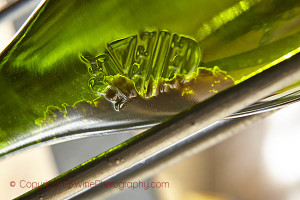 Is Champagne only about tradition, big houses, blending and prestige? No! There is a whole new generation of wine makers that want to show us the other side of Champagne: the terroir champagne. In their eyes Champagne is not only about bubbles. It is first and foremost a wine. After tasting some of these Champagnes from small artisanal producers you do get the impression of tasting wine instead of Champagne.
Is Champagne only about tradition, big houses, blending and prestige? No! There is a whole new generation of wine makers that want to show us the other side of Champagne: the terroir champagne. In their eyes Champagne is not only about bubbles. It is first and foremost a wine. After tasting some of these Champagnes from small artisanal producers you do get the impression of tasting wine instead of Champagne.
Read more on BKWine Magazine on these three trends that the new generation in Champagne drives in Britt’s article published on Forbes: What’s up in Champagne? | Britt on Forbes.
Discover the very best champagnes on location. Come on a wine tour to Champagne with BKWine and you will get to taste some of the very best Champagne has to offer in wine and food.
An interesting selection of wines from an unusual wine merchant
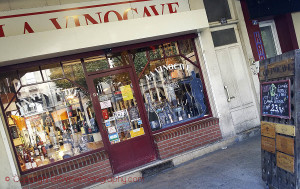 “Caviste is a French company which sells French and to some extent also Italian wines to the Swedish market through distance selling. There are several companies which use the same principle to supply customers with wines other than those sold by Systembolaget. (Ed.: Here you can see BKWine’s list of “Swedish” online wine shops / distance sellers.) Caviste has chosen to do it in a slightly different way. Instead of having a fixed range they sell, about once a month, a box of 6 selected wines from a specific producer. The wine is sent directly from the winemaker to the customer without intermediaries.”
“Caviste is a French company which sells French and to some extent also Italian wines to the Swedish market through distance selling. There are several companies which use the same principle to supply customers with wines other than those sold by Systembolaget. (Ed.: Here you can see BKWine’s list of “Swedish” online wine shops / distance sellers.) Caviste has chosen to do it in a slightly different way. Instead of having a fixed range they sell, about once a month, a box of 6 selected wines from a specific producer. The wine is sent directly from the winemaker to the customer without intermediaries.”
Read the rest of Tobias Karlsson’s article on BKWine Magazine, including complete tasting notes on their range of wines: An exciting wine merchant that takes you on a journey of discovery: Caviste.
Christmas Gift from the Wine Spectator
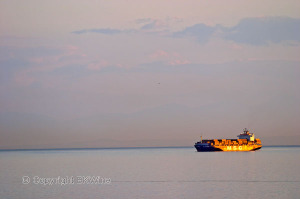 For Christmas we received a small present from The Wine Spectator. A bulky envelope arrived in the post. It came from the Wine Spectator and contained two copies of their magazine. We don’t subscribe though. One of our businesses is photography, specialised in wine. Many publications, magazines, books etc, use our photography when they need to illustrate something on wine. So does occasionally The WS and when they do they send us a copy. Thank you!
For Christmas we received a small present from The Wine Spectator. A bulky envelope arrived in the post. It came from the Wine Spectator and contained two copies of their magazine. We don’t subscribe though. One of our businesses is photography, specialised in wine. Many publications, magazines, books etc, use our photography when they need to illustrate something on wine. So does occasionally The WS and when they do they send us a copy. Thank you!
Read more on BKWine’s Photography Blog: Christmas present from the Wine Spectator.
Wine events calendar
Send us an email if you have some event you want on the calendar.
Don’t be an egoist! Share with your friends and other wine enthusiasts! Forward the Brief to your friends! Suggest that they sign up for a free subscription !
© Copyright BKWine







